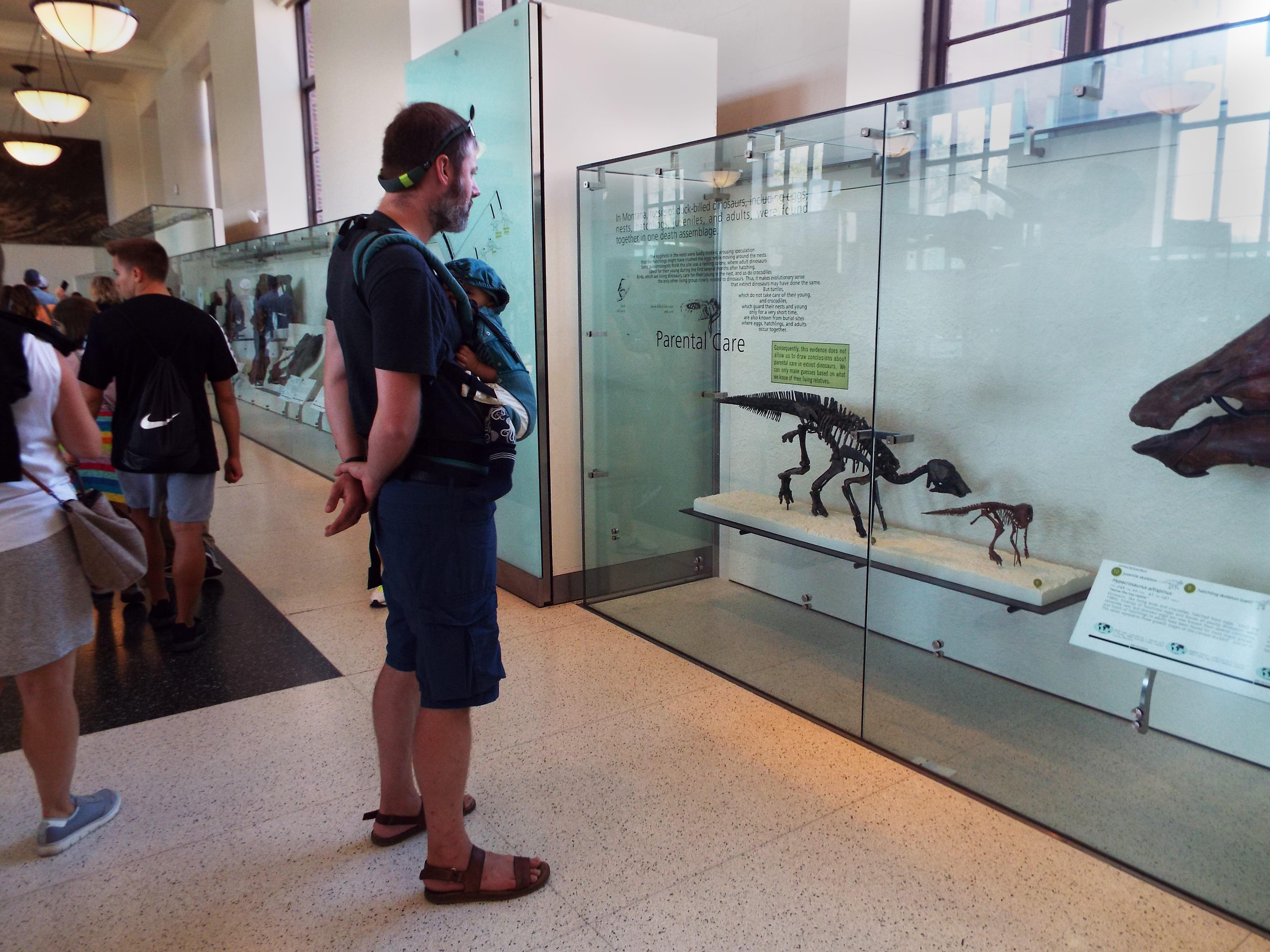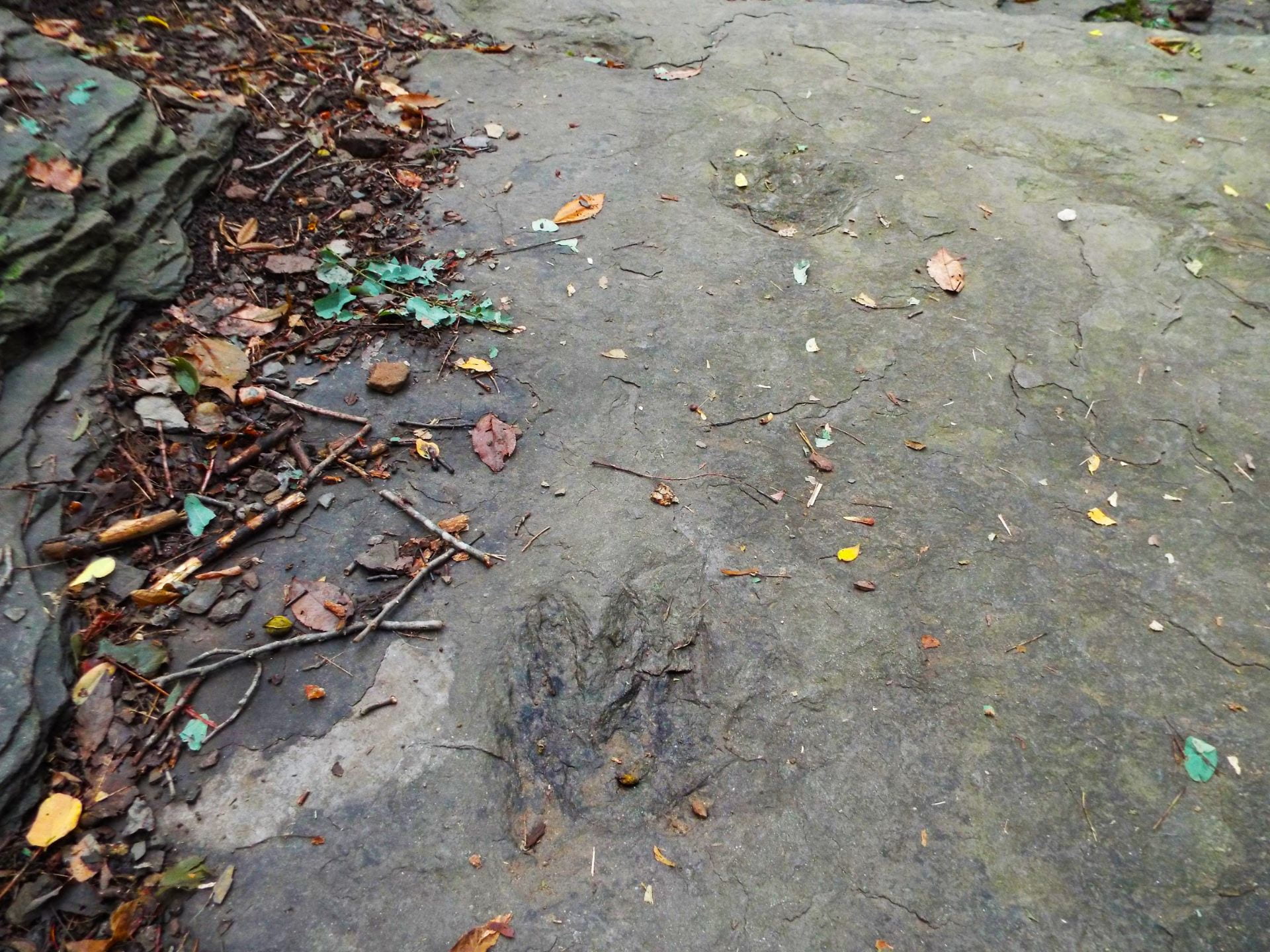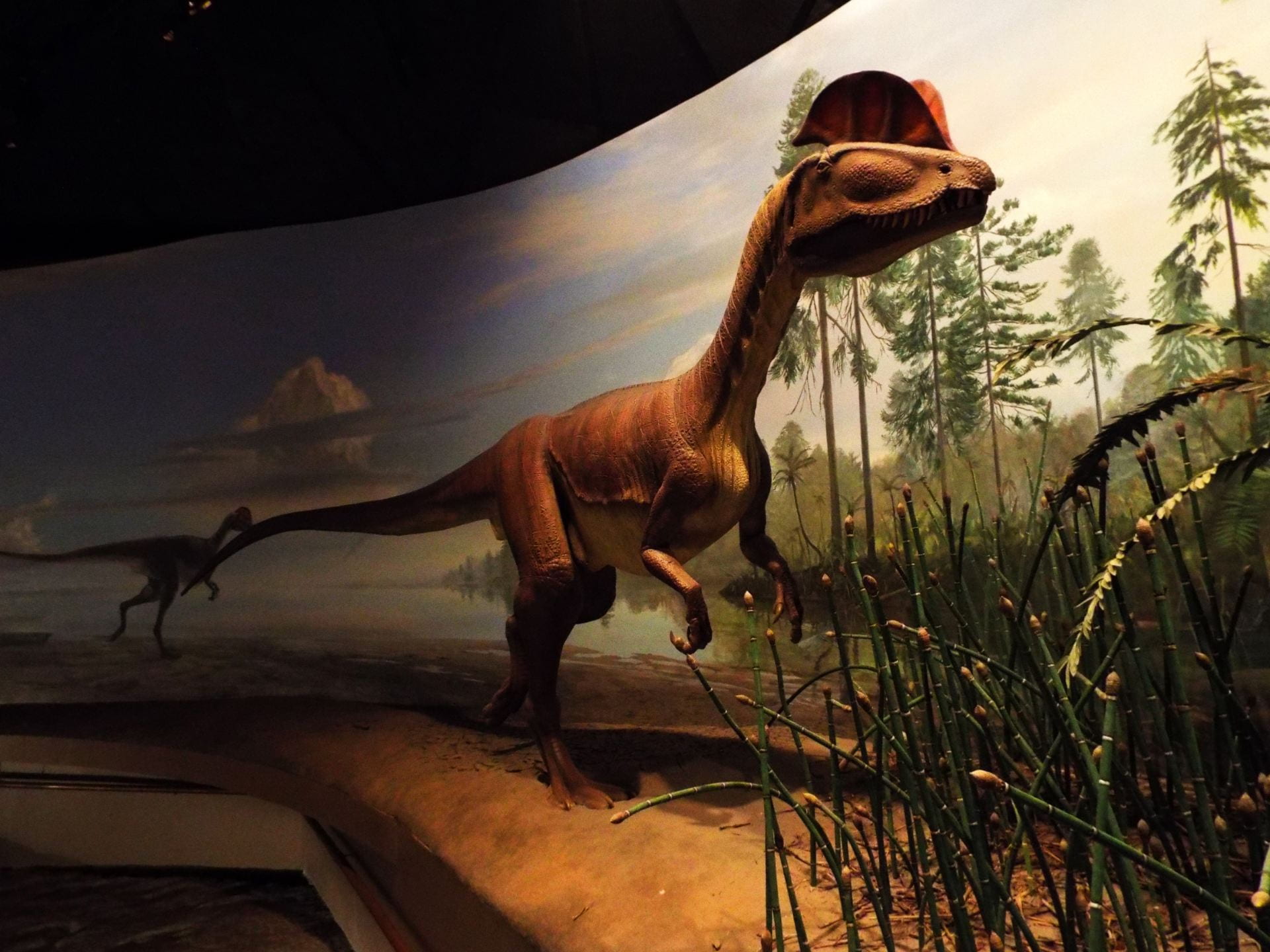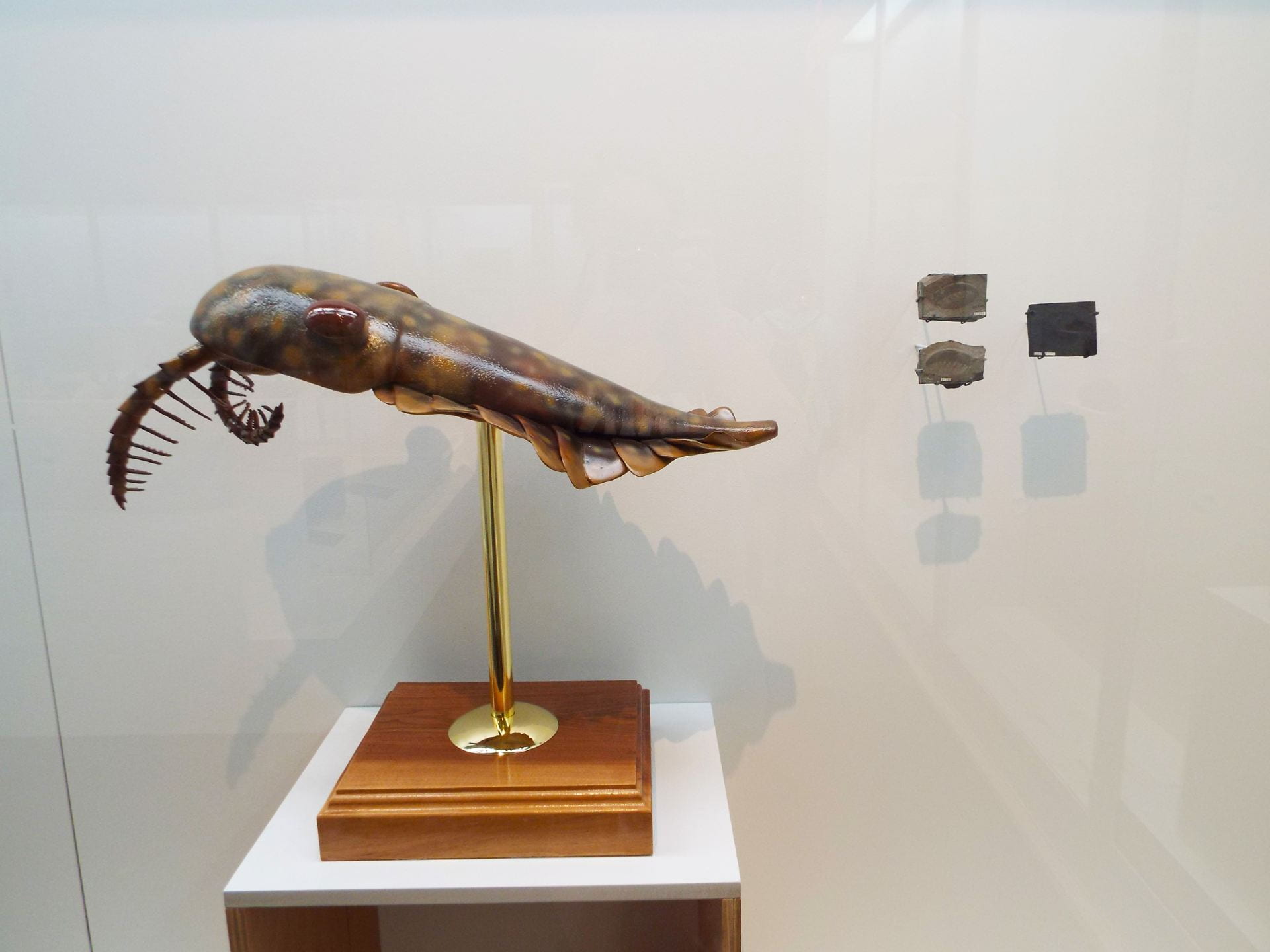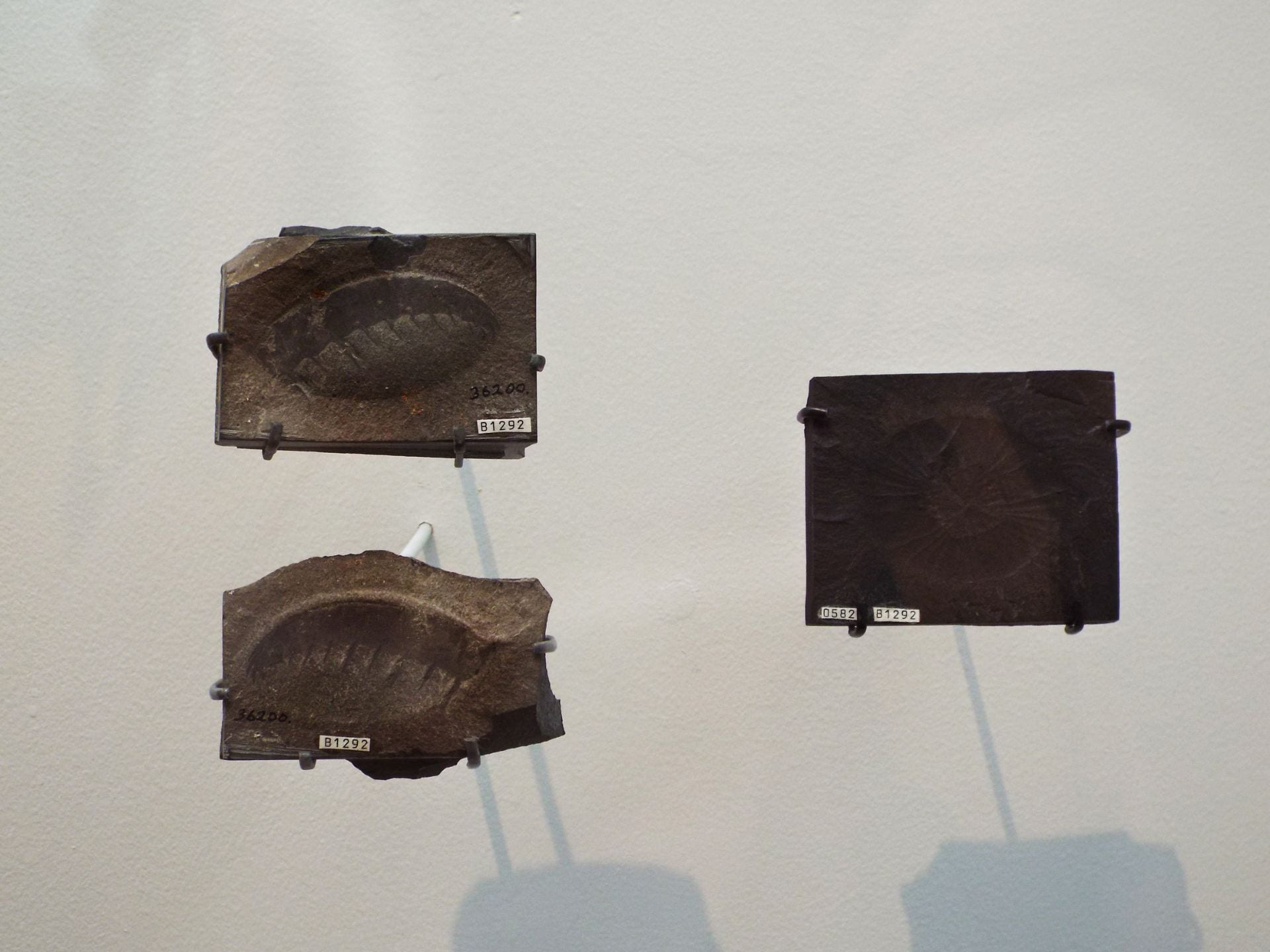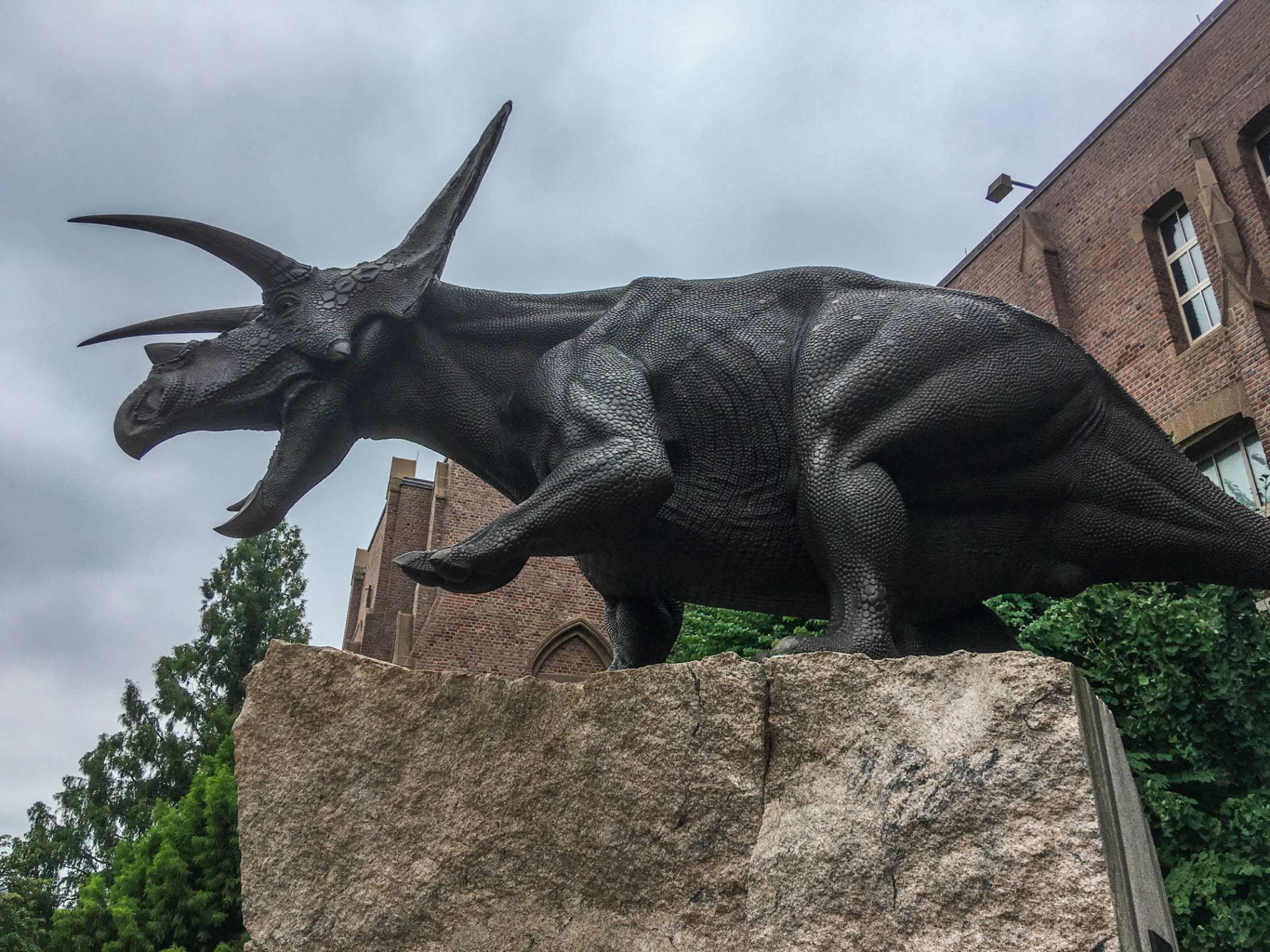Dinosaur Playground, Riverside Park, New York
The Dinosaur Playground is just a few subway stops uptown from the American Museum of Natural History. I visited the playground on a Monday morning, and just a couple of families were at the park with the kids playing on the opposite side of the playground. I hope the lumpy fiberglass triceratops and hadrosaur get a little more love when the playground is busier.
T. rex: The Ultimate Predator, Special Exhibit, American Museum of Natural History
I especially loved the juvenile (4 year old) T. rex model, or, as I immediately thought of it, the awkward teenage T. rex. Unsurprisingly, the T. rex: The Ultimate Predator special exhibit showcases many of the very same tropes that Henry Fairfield Osborne articulated in the AMNH’s first T. rex skeletal display in 1915. The predatory nature of the T. rex is emphasized to such a point as to create the image of a creature that is less a once-living animal, but rather a vicious monster that only thinks of the hunt. The juvenile T. rex model stands in innocent contrast to this image. The young tyrannosaur still has a downy feather coat and bird-life (even chicken-like) legs. With the gaze slightly upwards, and the mouth closed, this young dinosaur is not hunting. Even the large teeth aren’t threatening, but rather seem to suggest an animal that hasn’t quite grown into itself yet.
T. rex: The Ultimate Predator, Special Exhibit, American Museum of Natural History
The T. rex exhibit made interesting use of projections and “shadow plays.” A moving T. rex shadow met visitors entering the exhibit. A little girl immediately tried to pet the shadow as I walked by. A large animated scene featuring a T. rex and offspring was projected onto the back wall of the exhibit. This animation is designed to react to visitors and was especially enchanting to the young children exploring the exhibit. As the animated tyrannosaur turned and walked away, the gaggle of small children called out, “Bye bye!”
Dinosaur Halls, American Museum of Natural History
A father with his young child reads about the parental care behavior of hadrosaur dinosaurs. Throughout the museum, and particularly in the dinosaur halls, parents served as intermediaries between the exhibits and their young children through conversation, pointing out murals and models, reading textual information, and encouraging engagement in interactive displays. Kids are kids, though, and many children in the permanent dinosaur halls were treating the exhibits as playgrounds. In the Hall of Ornithischian Dinosaurs, a mother walking next to me laughed as her young son, five or six, said, “I’m going this way!” and walked into a glass enclosure.
I bought this 100 million year old Spinosaurus tooth at The Evolution Store in Greenwich Village. The Spinosaurus, named for the long extensions along its vertebrae, lived in what is now northern Africa during the Cretaceous Period. Tragically, the most complete specimen ever discovered was destroyed during Allied bombing of Munich during World War II. Nevertheless, Spinosaurus is known to have eaten fish, and is believed to have been at least semi-aquatic. Spinosaurus is also the largest carnivorous dinosaur known. The Evolution Store had a selection of a dozen or so Spinosaurus teeth for sale, ranging in size from the size of the tip of my pinky to the length of my hand — which also ranged dramatically in price as well. I chose a mid-sized (and priced) specimen to add to my modest natural history collection.
Powder Hill Dinosaur Park, Middleton, Connecticut
Powder Hill Dinosaur Park is a funny little spot. Small even for a municipal park, the Dinosaur Park is fenced off between private properties in an affluent Connecticut suburb. Driving by huge homes, stately lawns, and peach groves, I thought I couldn’t possibly be driving towards 200 million year old dinosaur tracks. When I did find the park, I then worried that maybe the tracks left so ago wouldn’t be easily recognizable to me. Fortunately, my fears were unfounded. A mourning dove flew into the trees as I approached, and as soon as I stood on the slate, I recognized a three-toed footprint in the rock. There seemed to be more tracks wherever I looked. As I stood in the park on an overcast Wednesday morning, listening to the birds and insects in the surrounding trees, I wondered how the Mesozoic insects and early birds would have sounded to the dinosaurs walking through.
Dinosaur State Park, Rocky Hill, Connecticut
Dinosaur State Park is a short, 20-minute drive from Powder Hill Dinosaur Park. Like the small municipal park, the state park is home to an expanse of preserved dinosaur tracks. Hundreds of dinosaur tracks left during the Jurassic Period are on display within the exhibit center. A life-size Dilophosaurus model is the centerpiece of the Jurassic diorama which depicts what the area would have looked like roughly 100 million years ago. Dinosaurs would have walked through the mud flats, at that time a wetland area, leaving behind their tracks which eventually hardened and were hidden under the earth until they were accidentally discovered by a building crew in the 1960s.
Yale Peabody Museum of Natural History, New Haven, Connecticut
I had a bit of an existential crisis in the Yale Peabody Museum. Not in a bad way. Deep Time is difficult to comprehend. To a human who may live to see the better part of a century, what’s the difference between 65 million years ago or 500 million years ago or even 4 billion years ago?
About 500 millions years ago, animal life suddenly dramatic change in the prehistoric oceans during the Cambrian Explosion. Cambrian animals, such as the Anomalocaris in the model pictured here, seem so utterly alien compared to dinosaurs.
The first dinosaurs emerged sometime during the Triassic Period, 250 million years ago. They walked on land and left tracks in the mud, they left skeletons that we can dig up, they left eggs in nests. We may not be able to say with certainty what any particular dinosaur looked like when alive, but we can identify a vertebra or femur or rib bone.
The fossils here are impressions left by Cambrian animals, just the slightest traces left by an appendage or a mouth. These impressions seem like shadows compared to dinosaur bones — and I think that perhaps that is the difference between 500 million years ago and 250 million years ago.
Yale Peabody Museum of Natural History, New Haven, Connecticut
The Yale Peabody Museum’s torosaurus also played a role in my Jenny Slate style existential crisis. A bronze torosaurus statue stands outside the museum, and a small display in the mezzanine gives some more background information about the sculpture and the dinosaur itself. Included in this display are skin impressions left by a torosaurus and a triceratops, a closely related animal. Around 65 million years ago, this animal laid down in the mud. The conditions at the time were such that the mud dried and hardened, then turned to stone and was preserved for millions of years, until some humans could find the impressions so that they could more accurately represent imagery of the long dead animal.




